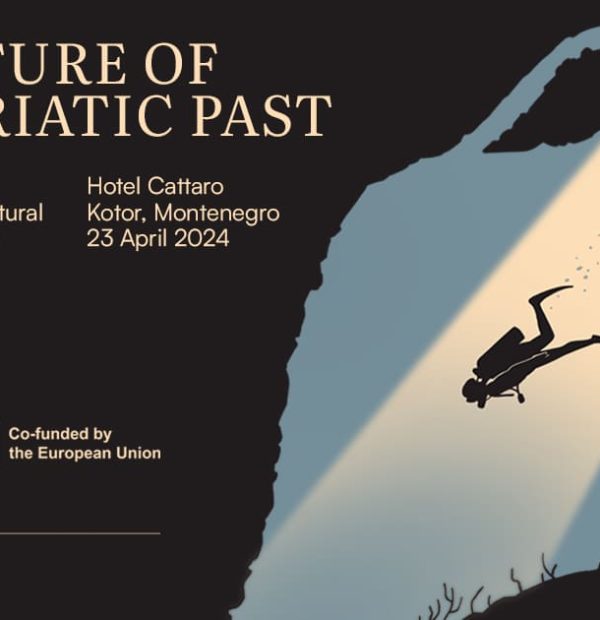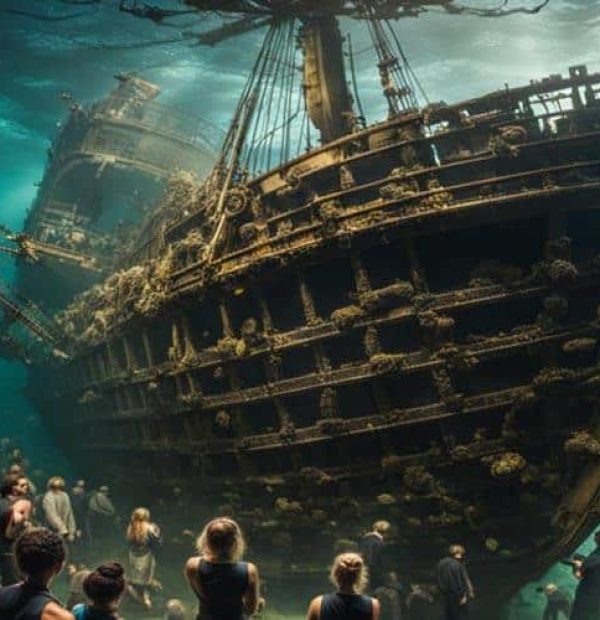Tuesday, 7 May 2024
Menu

Today was one of those days that many of us dreamed of. Turquoise Lake in Wapnica, which belongs to Wolin National Park, is one of the most beautiful reservoirs in West Pomerania. It is also a very protected body of water. No Gravity, thanks to the unusual courtesy of the Wolin National Park, got the chance to dive in this body of water.
However, diving alone would not satisfy us. We decided to do something more. That is why we organised the cleaning of the lake and the surrounding area.
When we set off today, we wondered what we would find under the surface of the water. On site we were greeted by a beautiful landscape around the lake, which attracted our eyes like a magnet. This further whetted our appetite for diving.

At 10:00 a.m., when a group of divers had already prepared their equipment and rubbish bags to go underwater, a second team was also formed to clean the surrounding area in the immediate vicinity of the reservoir.
During the cleaning, we also had the opportunity to meet an unusual guest – Ms. Julianna Rogowska – a resident of the local area, who has been interested in Wapnica and Turquoise Lake for many years. We heard a lot of interesting information about the lake and Wapnica.

After the clean-up, a bonfire was organised for all those who participated in the clean-up. We would like to thank first of all the Wolin National Park, because if it was not for their permission to dive, we would not be here.
We would also like to thank all the participants for taking part in cleaning up the lake and the surrounding area. We hope to see you here next year!
A bit of history about Turquoise Lake:
In 1600 chalk started to be quarried on a large scale in Wapnica. Around 1930, thanks to the abundance of this raw material, the lime works were developed. At the beginning the plant did not develop because of insufficient production of cement. It did not exceed 30,000 tonnes per year. Despite this, the rich deposits of chalk provided employment for local people. The cement plant employed nearly 400 people! Unfortunately, after some time production was discontinued. As a result, chalk extraction from the nearby excavations in Wicko and Wapnica stopped.
The founder of the lime works was Johannes Quistorp. He was an entrepreneur and philanthropist. He founded the Portland cement factory “Lebbin”, which under his leadership was transformed into a joint stock company. The most important fact, however, was that he was one of the first to take care of the needs of his employees. He was involved in social issues and financed the construction of schools, shelters and orphanages.
But let us return to the activities of the mine in the village of Wapnica. The extraction of chalk itself was a very complex process. The chalk was extracted using buckets, which were loaded onto the wagons of the funicular railway. It was also transported by narrow-gauge railway, which delivered the excavated material to the private harbour in Wapnica, where it was loaded onto barges.
From time to time the excavation filled up with water spontaneously. A solution was found and the water was pumped into Lake Wicko through a special drainage system.
The mine itself was closed down for a while before flourishing again during the Second World War. At that time, the Lublin cement works was in full swing. At that time cement was worth its weight in gold. It was used in the armaments industry and exported to Scandinavian countries. Annual production was as high as 100,000 tonnes! At that time, the demand for workers increased and the factory employed 800 people. Unfortunately, after 1945 the cement industry ceased to exist and the local quarry ceased to be used.
On 5 May 1945 the Russian army entered Wapnica and captured the area. Some of the equipment from the Wapnica chalk pit was dismantled by the Russians. Among other things, the entire drainage system was taken away, which caused the pit, 21 metres deep, to gradually fill up with groundwater.
The new inhabitants christened the reservoir “The Pit”. Over time, the entire pit was filled with subterranean waters. It was then called the Emerald Lake. This name was discontinued because of a similar reservoir in Szczecin. It was also a reminder of the chalk excavation in 1925, which the Germans called “Herta See” after a German goddess.
After 1985 the name was changed to Turquoise Lake. In the 1950s, it was decided to reactivate the pit again. A multibranch cooperative from Gryfice hired local people to pump out the water from the former opencast mine for almost a year.
After a year’s struggle, when the bottom was uncovered it turned out that several radio receivers and human bodies had been found on the bottom! It was a German family that had lived in Wapnica before. These people committed suicide because they were afraid of Russian repression.
Despite this, the mine resumed operations. It operated for a short time. Unfortunately, there were not many customers for the raw material and soon the mine was closed. At the end of 1954 the extraction of raw material was completely stopped. The reservoir filled up with water again and is still an attraction of Wolin National Park.
Source: Organiser










Welcome to DIVERS24.COM, your daily source of scuba news, freediving, scuba diving information, and equipment reviews. Our comprehensive coverage of the dive industry from A to Z provides you with all the latest scuba news, training updates, underwater photography tips, and everything else related to scuba diving. Whether you’re a beginner or an experienced diver looking for more knowledge about scuba gear or techniques – we’ve got it covered! With our in-depth articles written by experienced divers who have been there and done that, you are sure to find exactly what you need here at Divers24.com. Dive into scuba news today!
Underwater Media Sp. z o.o.
Szafarnia 11/F8,
80-755 Gdansk, Poland
Welcome to DIVERS24.COM, your daily source of scuba news, freediving, and scuba diving information. Sign in for a weekly news update and discount coupons for dive gear and apparel.
@2023 - underwatermedia.pl. All Right Reserved. Designed and Developed by Tworzenie stron internetowych Gdansk

The Divers24 portal is currently the largest online medium treating diving in Poland. Since 2010 we have been providing interesting and important information from Poland and around the world on all forms of diving and related activities.
Contact us: info@divers24.com